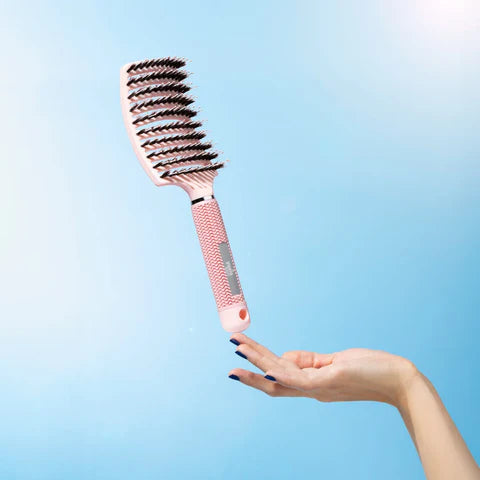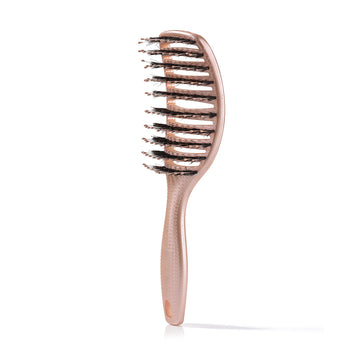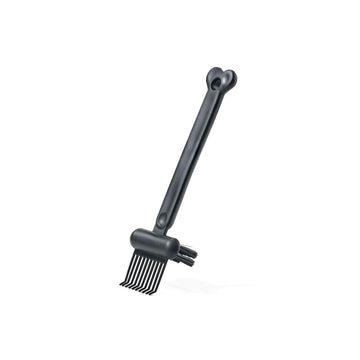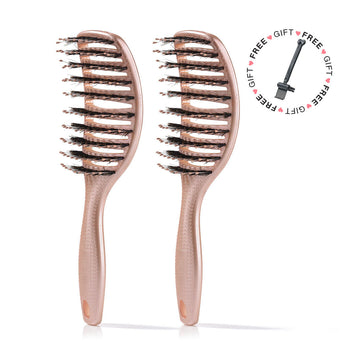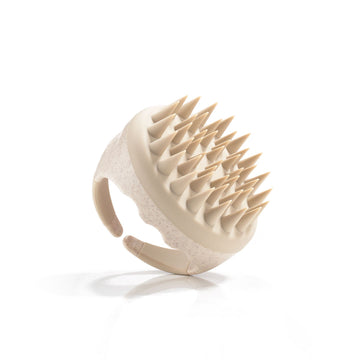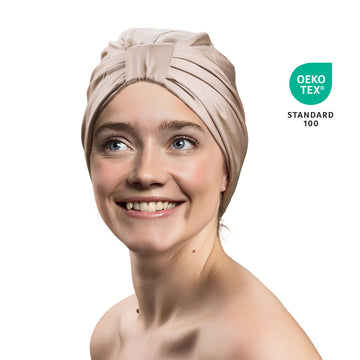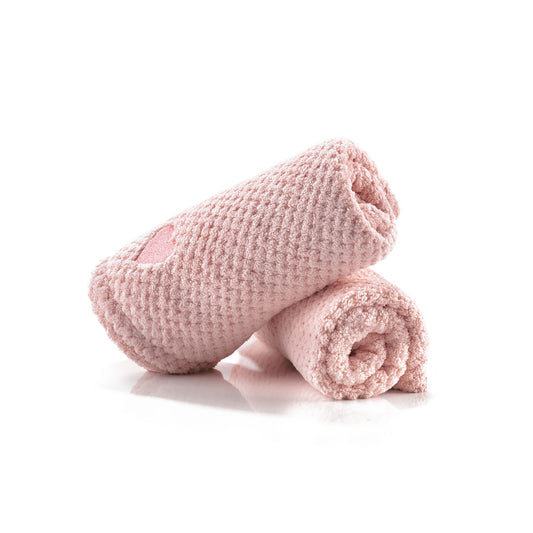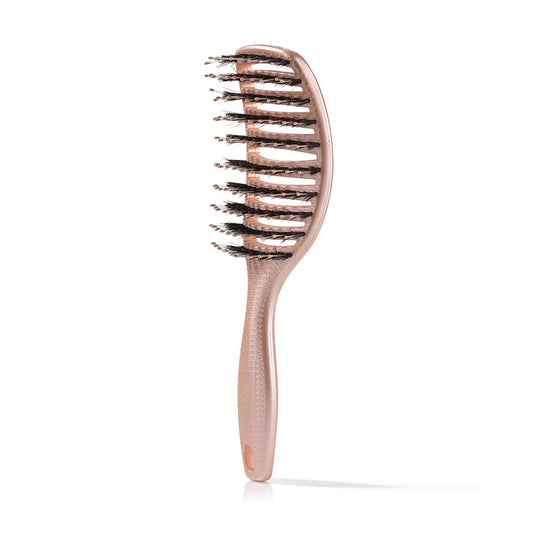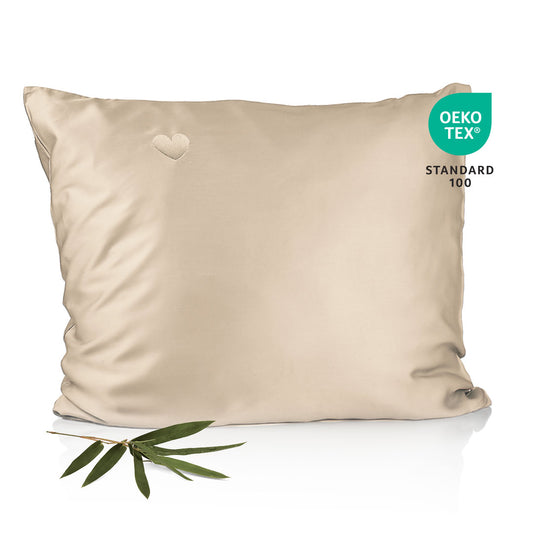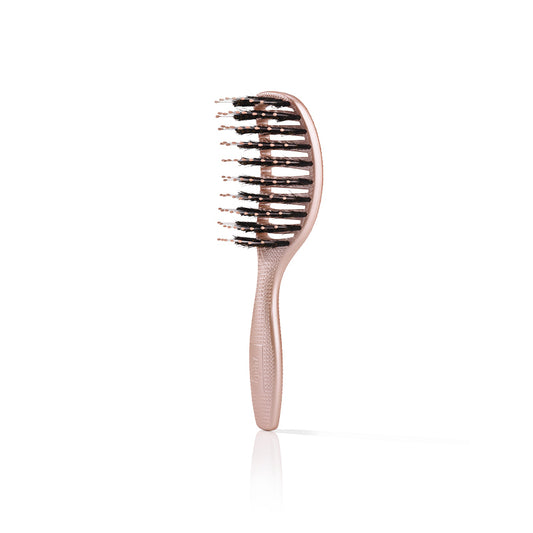
Effective ways to combat hair static
Static in hair can be a persistent issue, but incorporating the right moisturizing techniques can significantly reduce its occurrence. Hydrating masks and oils are excellent additions to your hair care routine, enhancing moisture retention and minimizing static. Applying a nourishing hair oil, such as our rosemary hair oil, can provide essential hydration, helping maintain normal hair and reducing static electricity.
Another effective method is to use a microfiber towel when drying your hair. Unlike regular towels, microfiber minimizes friction, which is a common cause of static. By gently patting your hair dry instead of rubbing, you can further reduce static buildup.
Brushing hair: Choosing the right tools
The choice of brush can play a significant role in managing hair static. Opting for a boar bristle brush, like our Curvy Brush, can help distribute natural oils throughout your hair, reducing static and improving overall hair health. Boar bristles are gentle on the hair and can help minimize the friction that leads to static buildup.
When brushing, it’s important to use gentle, slow strokes to avoid creating additional friction. Starting from the ends and working your way up can help detangle without causing unnecessary static.
FAQs: Addressing common concerns
Why does my hair get static in winter? During the winter months, the combination of dry air and increased friction from hats and scarves contributes to static. Maintaining moisture in your hair and using anti-static products can help manage this seasonal challenge.
How can I prevent static in my hair? To prevent static, focus on keeping your hair moisturized by using hydrating products and avoiding synthetic materials that increase friction. Consider using a bamboo pillowcase to reduce friction while you sleep and help maintain your hair's moisture balance.
What materials should I avoid to reduce static? Synthetic brushes and clothing made from materials like polyester or wool can increase static. Opt for natural fibers and metal or wood tools to help discharge static and keep your hair smooth.
Understanding material effects on hair static
When it comes to managing hair static, the materials we interact with daily play a significant role. Synthetic materials like polyester and wool can exacerbate static issues by increasing friction. These materials tend to hold onto electrical charges more than natural fibers, leading to more pronounced static. Opting for clothing and accessories made from natural fibers can help minimize this effect. Additionally, using tools made from metal or wood rather than plastic can help discharge static due to their conductive properties, offering a practical solution for those prone to static buildup.
Exploring the science of electrons and hair static
At the core of hair static lies the science of electrons. When hair comes into contact with certain objects, electrons are transferred, resulting in an imbalance. This imbalance causes hair strands to repel each other, leading to the familiar flyaway effect. Understanding this principle can empower you to make informed choices about how to manage static. By reducing friction and maintaining adequate moisture in your hair, you can help dissipate electrical charges, keeping your hair smoother and more manageable.
FAQs: Addressing common concerns
Why does my hair get static in winter?
During winter, the combination of dry air and increased friction from wearing hats and scarves contributes to static. To manage this, focus on maintaining moisture in your hair and using anti-static products.
How can I prevent static in my hair?
To prevent static, keep your hair moisturized by using hydrating products and avoid synthetic materials that increase friction. A microfiber towel can help reduce friction while drying your hair.
What materials should I avoid to reduce static?
Avoid synthetic brushes and clothing made from materials like polyester or wool, as they can increase static. Opt for natural fibers and tools made from metal or wood to help discharge static and keep your hair smooth.
 2-5 päivän toimitus
2-5 päivän toimitus
 100 000+ tyytyväistä asiakasta
100 000+ tyytyväistä asiakasta
 Tyytyväisyystakuu
Tyytyväisyystakuu




